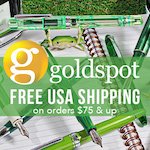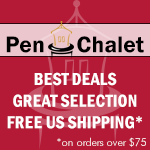I'm not sure what Pentel is trying to accomplish here. On one hand, the EnerGel is a staple in the world of gel ink pens because of its smooth, dark lines. On the other hand, the Tradio is well respected by artists and writers alike for its wild nib and line variation. Put them together and you get...what exactly?
The Pentel EnerGel Tradio Needle-Point Gel is a good pen. A really good pen in fact. It writes wonderfully, as you would expect, and is visually appealing. The grip is a little slick, but that's my only gripe as far as form and funtion goes. But for the life of me, I don't know why this pen exists.
The only Tradio feature this pen has is the window in the cap. That design does say to me "Hey, I'm a Tradio", but if you have ever used or seen a Tradio that is where the similarities stop.
That leaves the rest of the experience in the hands of the EnerGel. And as I mentioned earlier, it is a fine EnerGel. What I didn't mention is it is an expensive EnerGel at $4.00 per unit. My favorite online-only EnerGel is the Euro Needle. It has a better barrel and a better grip and the same great writing quality for just $2.50. For a base level EnerGel experience, you can get the EnerGel X for $1.35. So, three for the price of one, plus retractability and several more ink colors to choose from.
The EnerGel Tradio is straight out of the Redundant Department of Redundancy, and an inferior product to boot. Let's see some real innovation next time Pentel.
(Interesting note: Only after I completed this review I realized I had reviewed the 0.7 mm blue ink model of this pen a year and a half ago. Fun to compare my thoughts then and now.)
(JetPens provided this product at no charge to The Pen Addict for review purposes.)



















